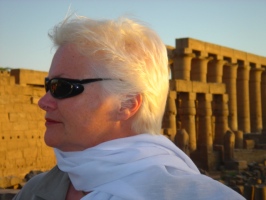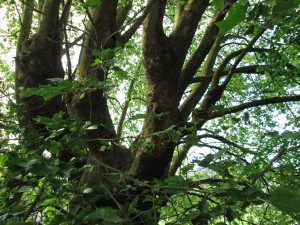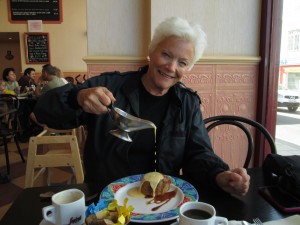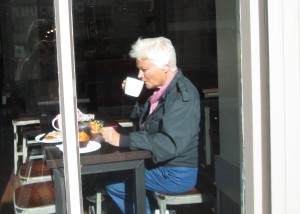
Castle Cornet, Island of Guernsey, facing north on the English Channel
The bestselling literary phenom, The Guernsey Literary and Potato Peel Pie Society, was set here. Read by perhaps every book club in the United States—including mine in Salt Lake City–this book (by Mary Ann Shaffer and Annie Barrows) is set during the occupation of the island by Nazi soldiers starting in 1940. Various monuments along Guernsey’s waterfront commemorate the liberation of the island in 1944.
A grim and true part of the book was the description of the Todt (after Nazi engineer, Fritz Todt, though Tod is also “death” in German) workers brought to Guernsey by the Nazis. These conscripts—about 16,000 men and boys from Germany’s Occupied Territories, political prisoners, Russian prisoners of war, and 1% of the German men who could not pass the physical—were often worked to death as part of Heinrich Himmler’s plan of “Death by Exhaustion.†I saw no memorials to these conscripts.

Fritz Todt, Nazi engineer
I boarded the Condorferries express in Weymouth, sitting in an assigned seat, rolling and dipping for 2 ½ hours east across the English Channel, to Guernsey, a Channel Island. No passport is required, as Guernsey belongs to England. Some passengers were sick from the bumpy ride, though I am happy to report my stomach was fine, and the return trip was smooth as fine custard.
The French writer, Victor Hugo (1802–1885), lived with his wife, Adele, in Hauteville House, and apparently, with his mistress Juliette Drouet, on Guernsey from 1855 to 1870. Hugo wrote Les Miserables while there and set Les Travailleurs de la mer (Toiler of the Sea) on the island.
Hauteville House is a lemon -yellow rowhouse on rue du Hauteville, up from the harbor. Hauteville House is not open to the public. Even a photo opp is denied since the plaque on the wall is behind a tall, black, iron fence. There is a computer printout in a plastic sleeve hanging in one of the windows reminding visitors the house is not a museum. Okay. Maintaining even a a small museum is expensive and labor-intensive, plus it denies housing space to Guernseyans. But I still think someone could have tried a little harder. (Continued)
 And here at the Weymouth Library was an adult woman who was just getting started on her journey to literacy. (Continued)
And here at the Weymouth Library was an adult woman who was just getting started on her journey to literacy. (Continued)
 “Rejected suitors take to roaming as naturally as unhived bees.” It’s a phrase from English poet and novelist Thomas Hardy (1840-1938) and refers to Diggory Venn, perhaps my favorite of the Hardy characters.
“Rejected suitors take to roaming as naturally as unhived bees.” It’s a phrase from English poet and novelist Thomas Hardy (1840-1938) and refers to Diggory Venn, perhaps my favorite of the Hardy characters. All Those Violins Can’t Be Good.
All Those Violins Can’t Be Good.
![[perslouisa.jpg]](http://1.bp.blogspot.com/_BMw1HAt_Wh8/SkNCSjg97NI/AAAAAAAACb0/hi5IRTL4ssY/s1600/perslouisa.jpg)




 “Not always, Mrs. P. Not always.â€
“Not always, Mrs. P. Not always.â€ One might ask if breakfasting at Starbucks when abroad is really traveling. I ask that myself when I enter one. Believe me, there are plenty of reasons not to enter one. Number one for skipping an English Starbucks is that they don’t have scones, at least not I the English Starbucks I’ve been in so far. But, despite this sconelessness, here are my reasons for frequenting this American franchise.
One might ask if breakfasting at Starbucks when abroad is really traveling. I ask that myself when I enter one. Believe me, there are plenty of reasons not to enter one. Number one for skipping an English Starbucks is that they don’t have scones, at least not I the English Starbucks I’ve been in so far. But, despite this sconelessness, here are my reasons for frequenting this American franchise.